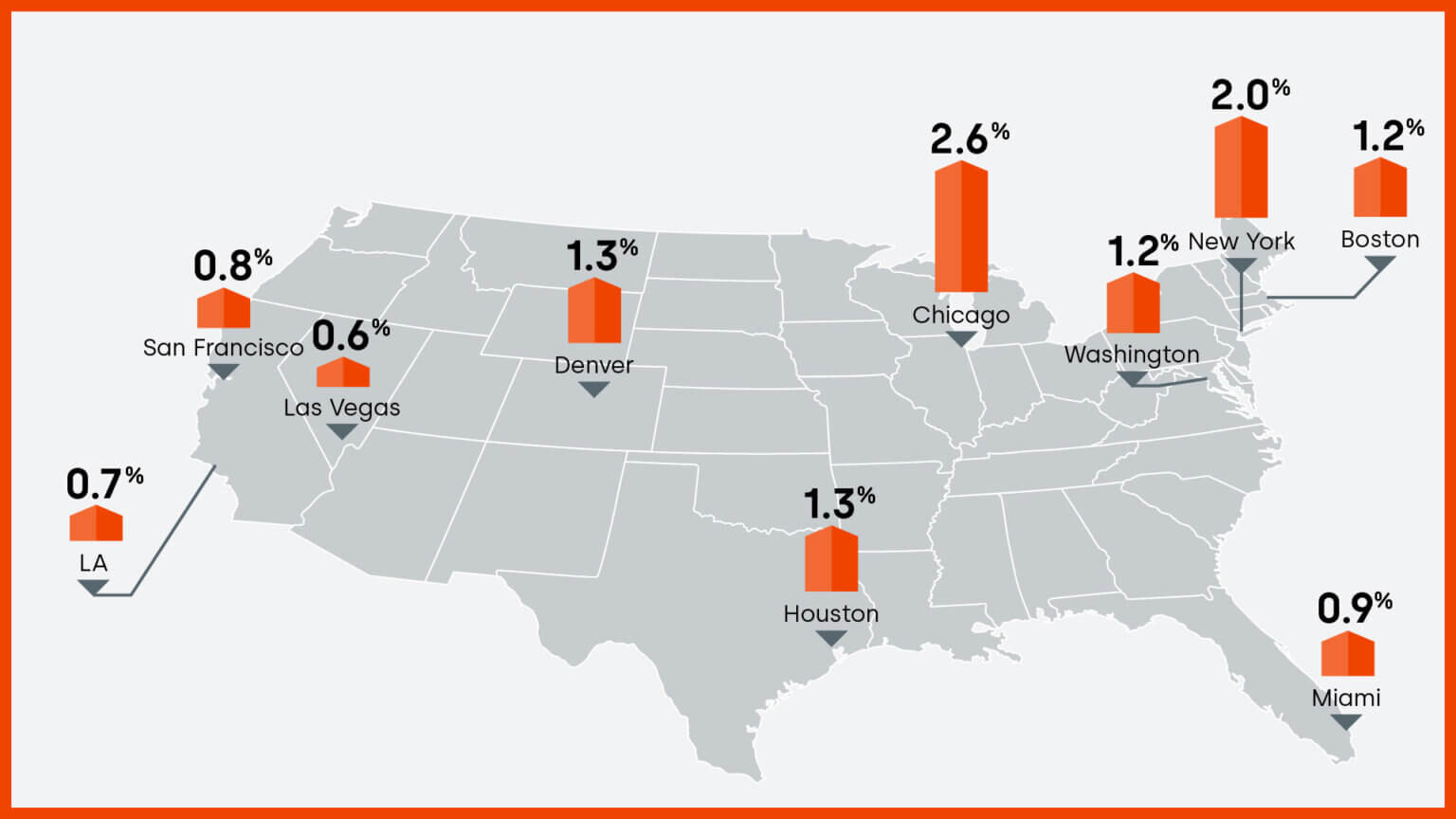Seattle's housing market continues to be a tale of two trends. While home prices sizzle, reaching some of the nation's highest rankings according to a recent report, a surge in available properties offers a glimmer of hope for potential homebuyers. This rise in inventory could lead to a stabilization of prices across Washington state, but high mortgage rates remain a hurdle for many. Dive deeper into the NWMLS report to see if Seattle's housing market presents an opportunity or an obstacle for you.
State of the Seattle Housing Market
Inventory Surge
Seattle's housing market has seen a substantial increase in inventory, providing more options for potential buyers. In June 2024, the inventory of homes for sale rose by 35.7% compared to the same month last year, reaching 14,393 active listings. This uptick in available listings marks a significant shift in the market dynamics, potentially stabilizing prices.
Impact of Mortgage Rates
Despite the increased inventory, the high mortgage rates remain a point of concern for buyers. As of late June 2024, the 30-year fixed mortgage rate stood at 6.86%, constraining the purchasing power of many potential homeowners. Elevated mortgage rates amplify affordability issues, making homes less reachable for first-time buyers.
Price Trends
Median Sales Price
The median sales price for residential homes and condominiums in Seattle exhibited a positive trend. In June 2024, the median price was $650,000, up 4% from $625,000 in June 2023. This growth indicates a resilient market that's still attracting buyers despite the higher financing costs.
- Counties with Highest Median Sales Prices:
- San Juan
- King
- Snohomish
- Counties with Lowest Median Sales Prices:
- Columbia
- Adams
- Ferry
Closed Sales Transactions
The number of closed sales transactions in June 2024 decreased by 3.1% year-over-year. This contrasts with the positive trends seen in April and May, where closed transactions recorded increases of 9.5% and 6%, respectively. This slight decline could be attributed to the combination of high mortgage rates and elevated home prices.
Market Balance
Months of Inventory
As a crucial indicator of market conditions, the months of inventory metric pointed out a slight imbalance. June 2024 reported 2.17 months of inventory, which is below the balanced market range of 4 to 6 months. This suggests that, while inventory has increased, it still falls short of achieving a balanced buyer-seller market.
Buyer Activity
Property Showings
Consumer interest, as reflected by property showings and keybox accesses, has shown some changes:
- Keybox accesses remained stable with 163,536 accesses in June 2024, nearly identical to May's 163,414.
- Scheduled property showings dropped from 128,924 in May to 119,775 in June 2024.
This decrease in scheduled showings might indicate a slight cooling off in buyer urgency or a greater availability of homes, allowing buyers to be more selective.
Down Payment Resource Program
June also saw a notable increase in properties eligible for the Down Payment Resource (DPR) program offered by NWMLS. There were 16,015 listed properties eligible for this program, reflecting a 15.3% increase over June 2023. The DPR program aims to assist buyers with down payment needs, making homeownership more accessible.
Expert Insights
Selma Hepp, chief economist at CoreLogic, provides a comprehensive overview of the market dynamics:
“While increased inventory of homes on the market this spring offered potential home buyers more options, elevated mortgage rates put affordability at the forefront of housing market concerns. Home prices did heat up again this spring in the Seattle metro area, putting the region among the strongest appreciating markets across the country. More inventory will slow pressure on home prices over time.”
Bottom Line: Seattle's housing market in 2024 is characterized by a mix of opportunities and challenges. The increase in inventory provides potential buyers with more choices, but high mortgage rates are a significant barrier. Home prices continue to rise, making Seattle one of the nation's top appreciating markets. For potential buyers and sellers, staying informed and leveraging programs like the DPR can offer strategic advantages. Real estate professionals and economists alike will continue to monitor these trends closely as the year progresses.
ALSO READ:
- Seattle Housing Market: Prices, Trends, Predictions 2024
- Seattle Real Estate Investment: Is it a Good Place to Invest?
- The Hottest Housing Markets in Seattle Area (2024)
- Real Estate Forecast Next 10 Years: Will Prices Skyrocket?
- Housing Market Predictions for Next 5 Years (2024-2028)
- Housing Market Predictions for the Next 2 Years












